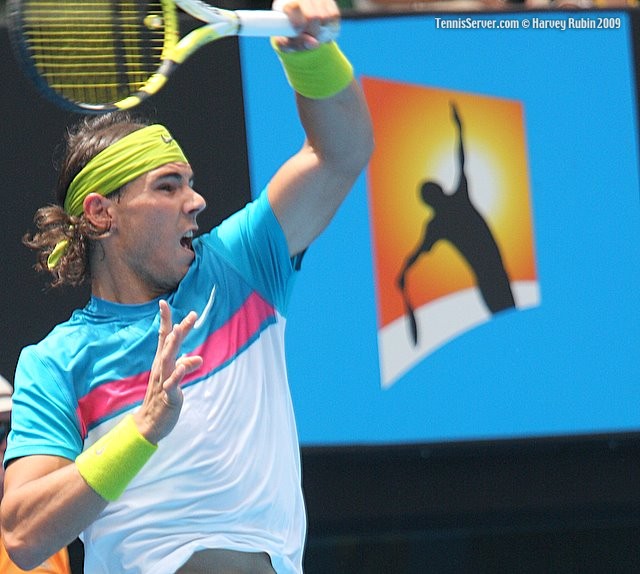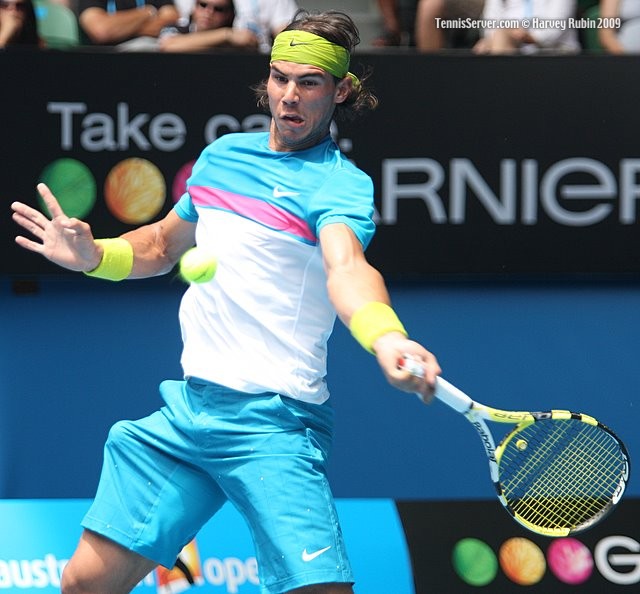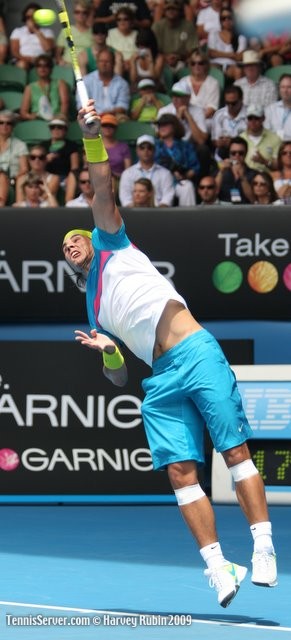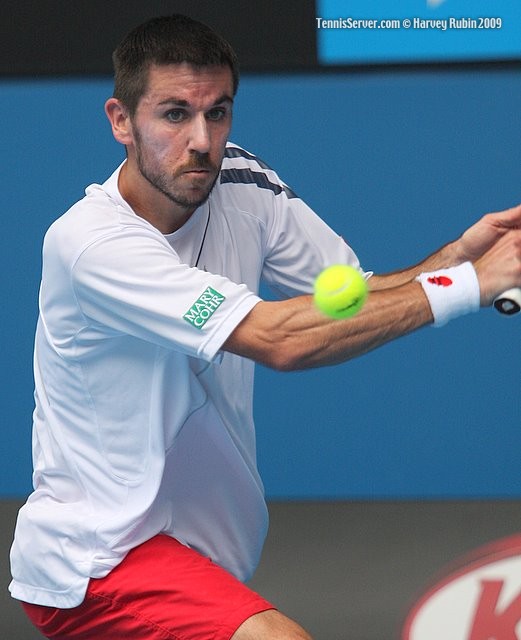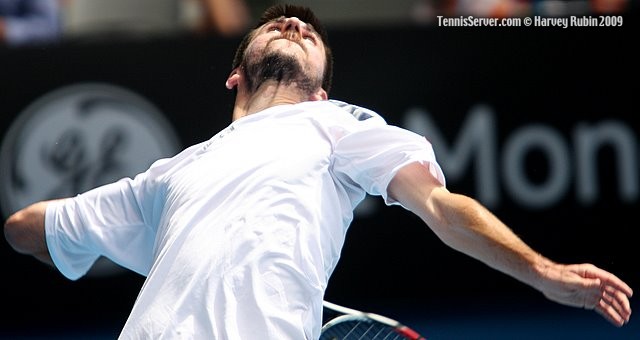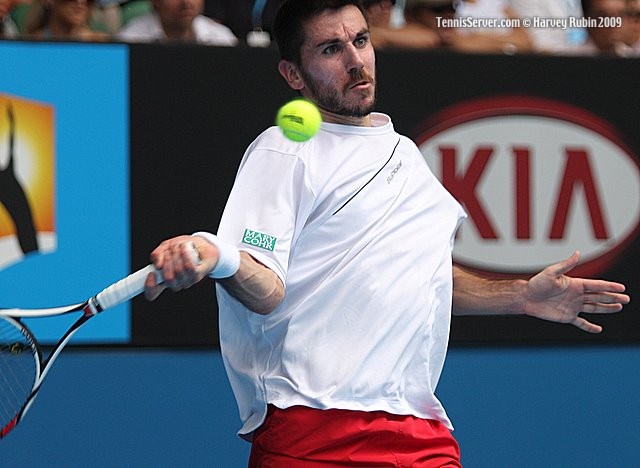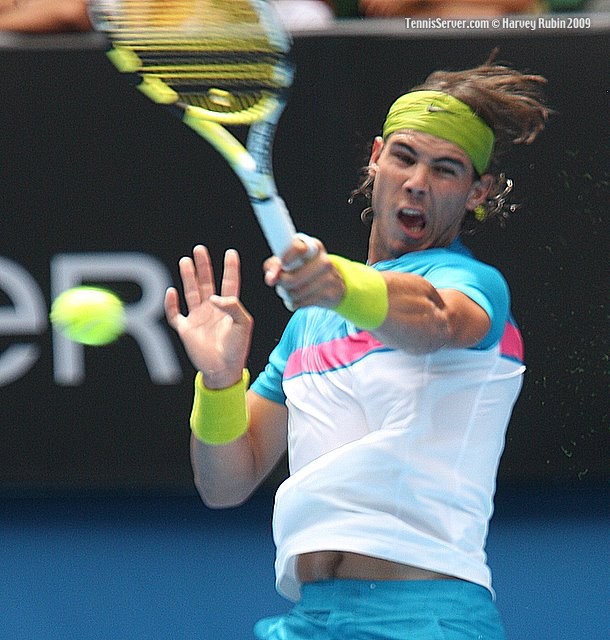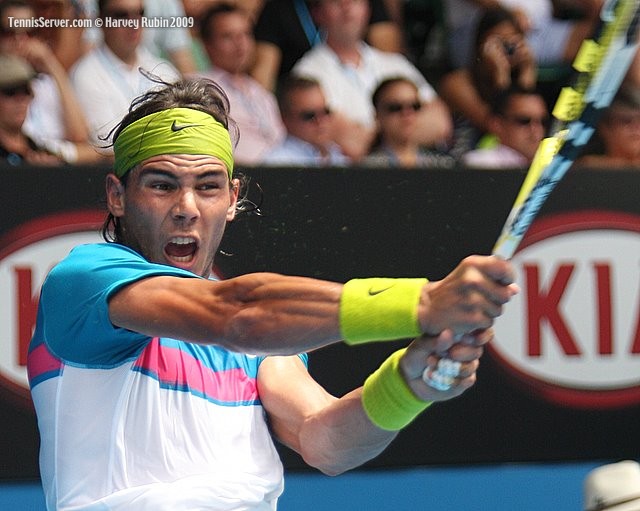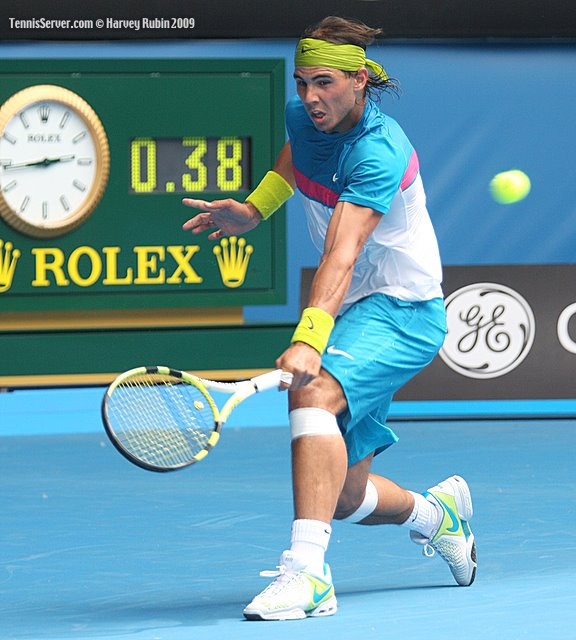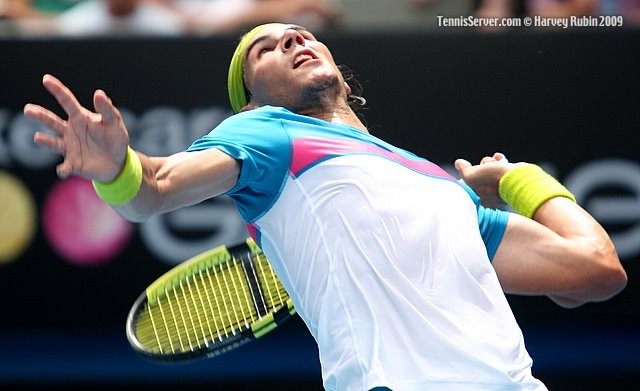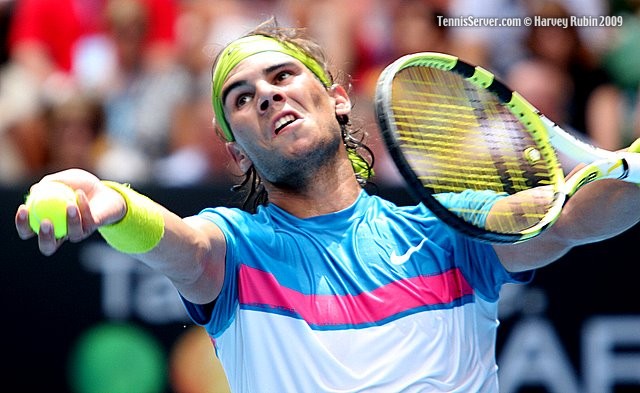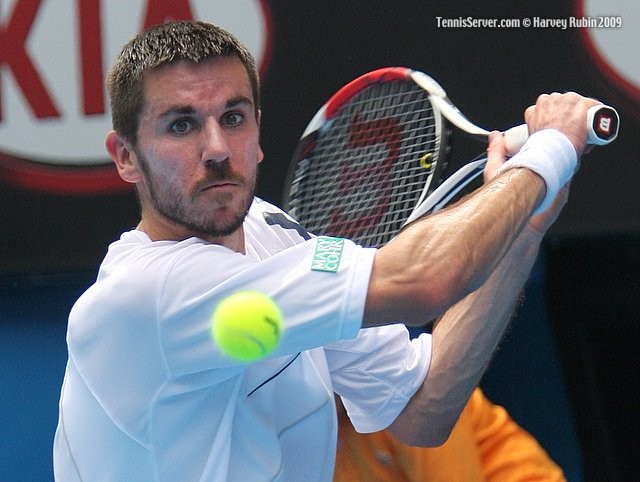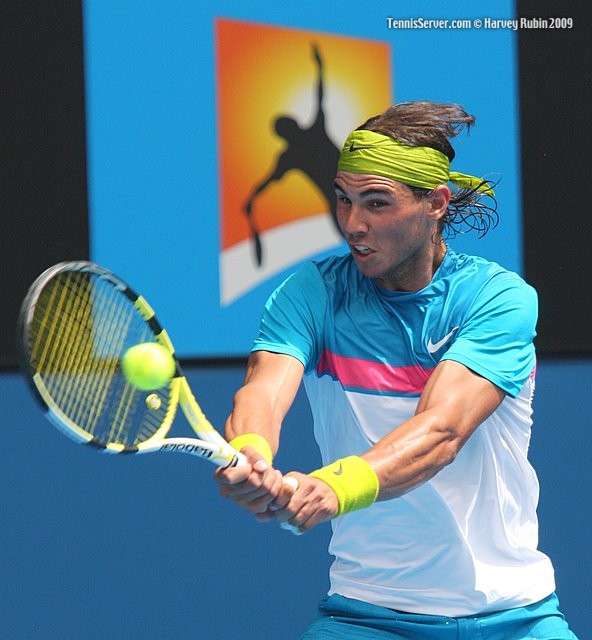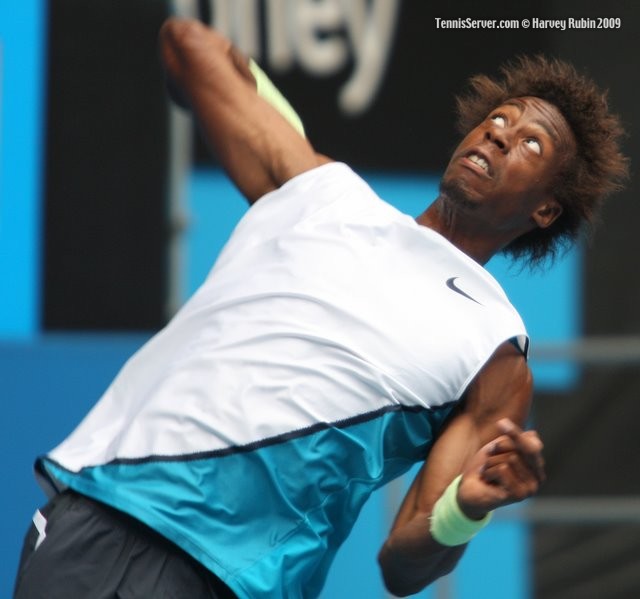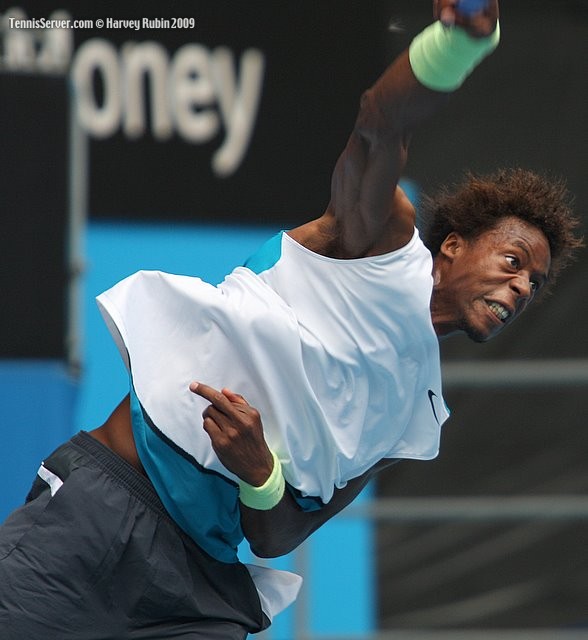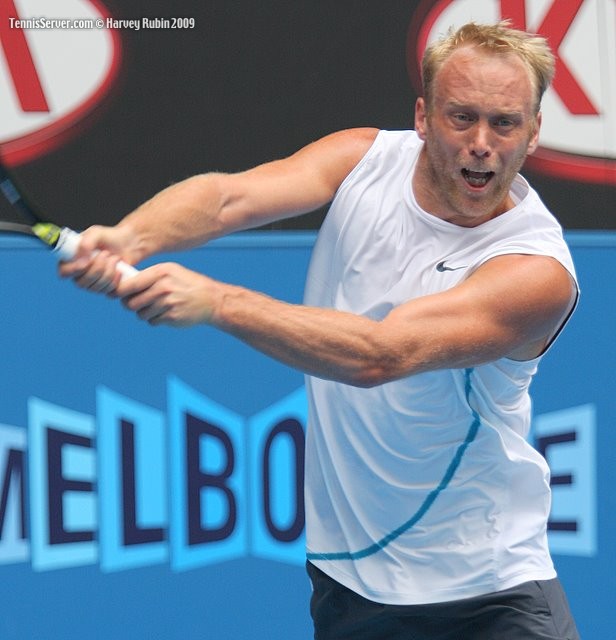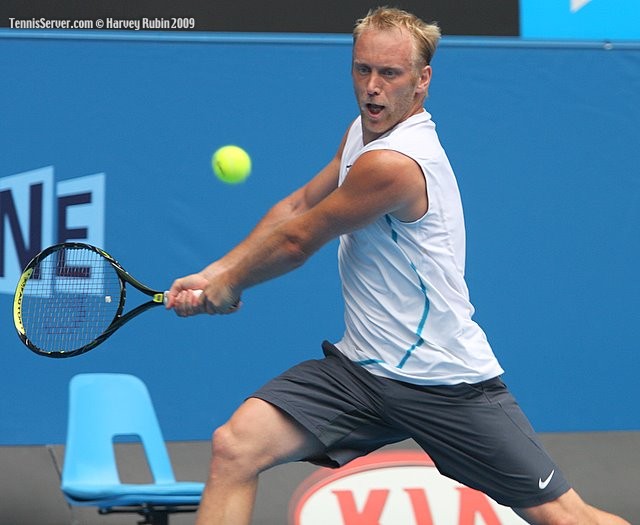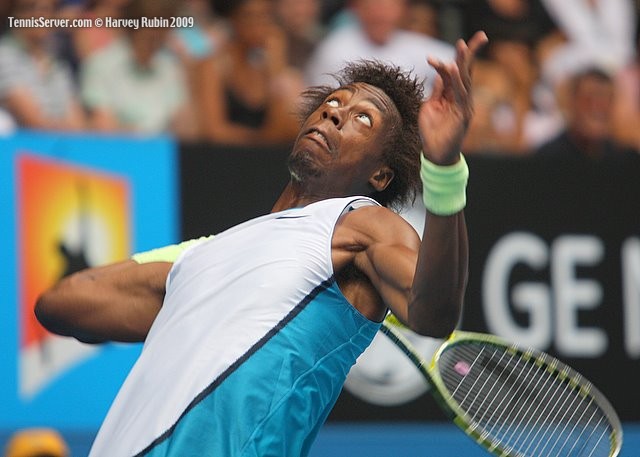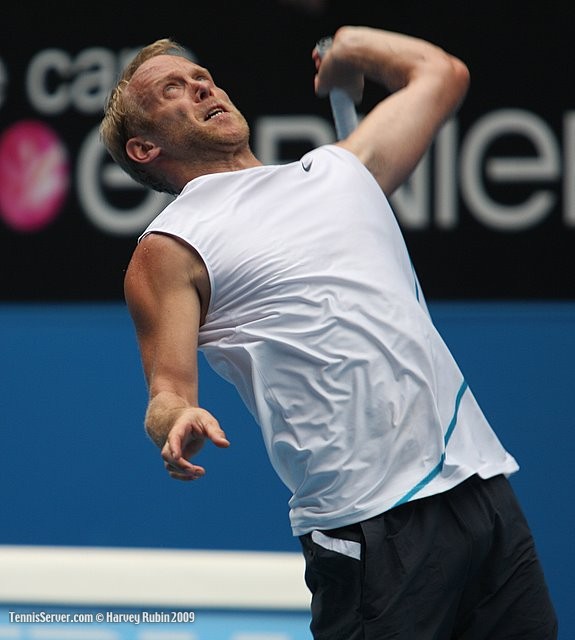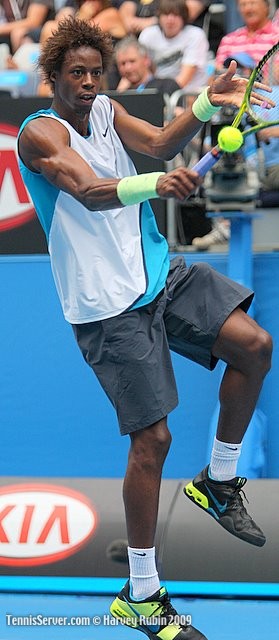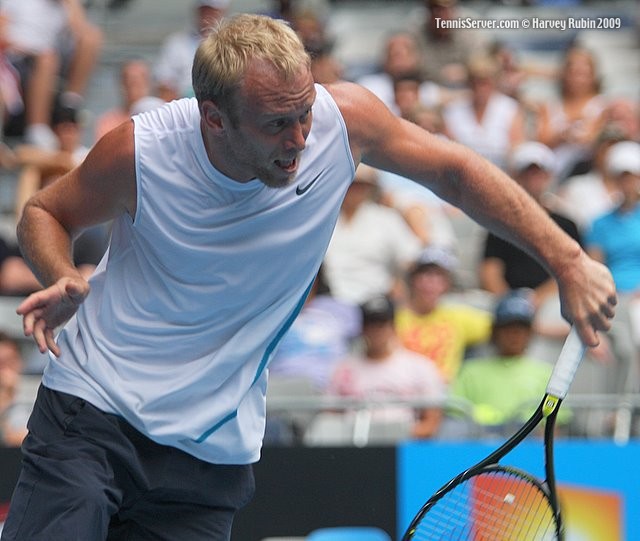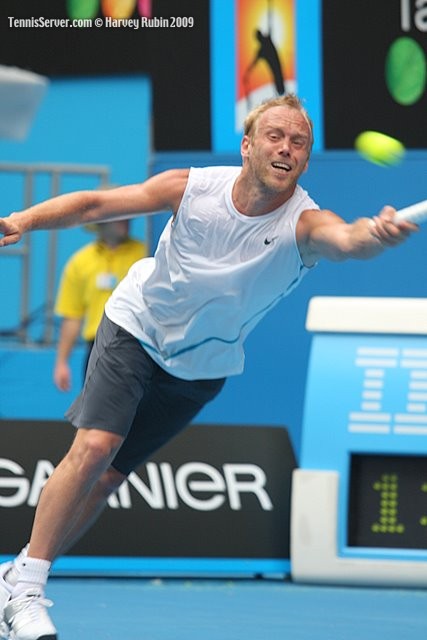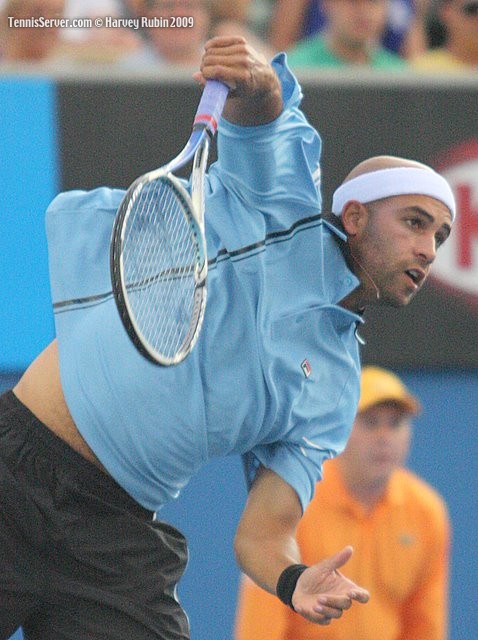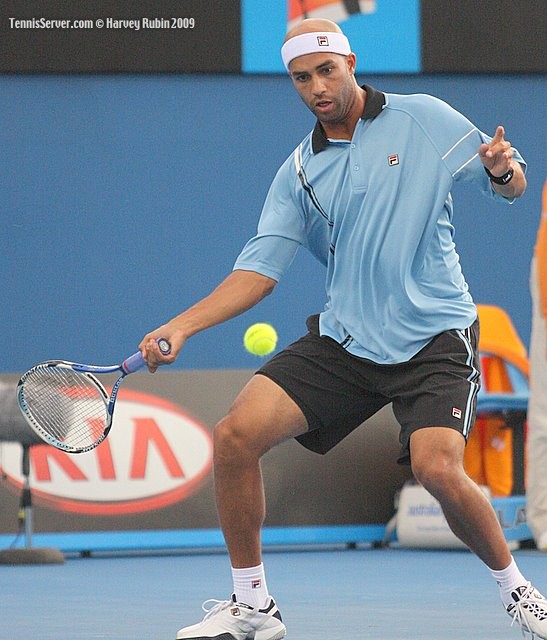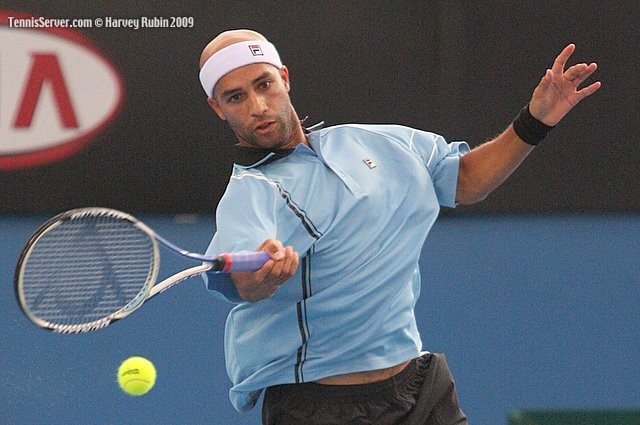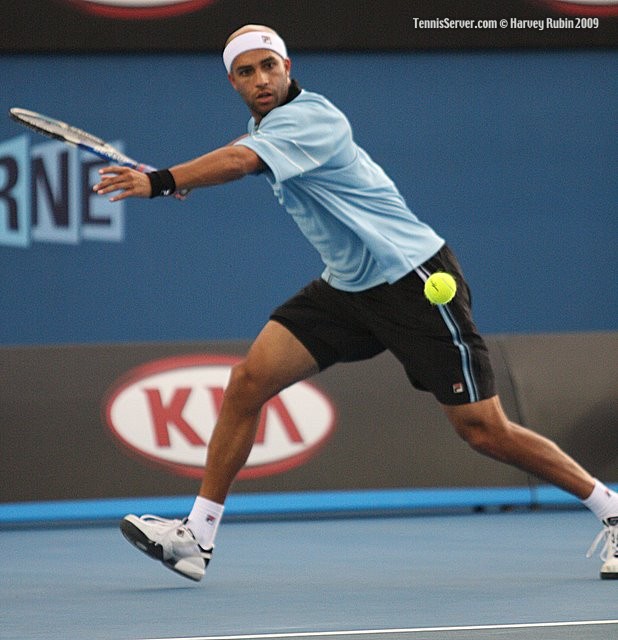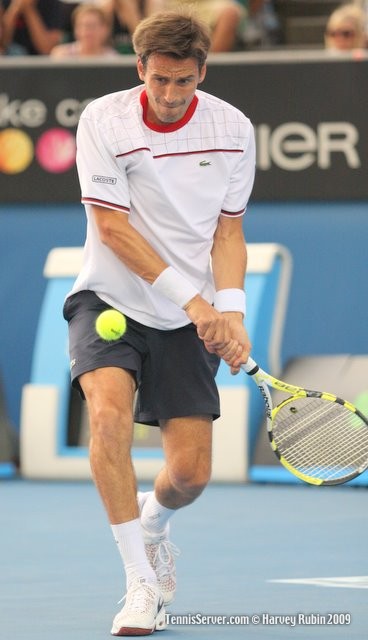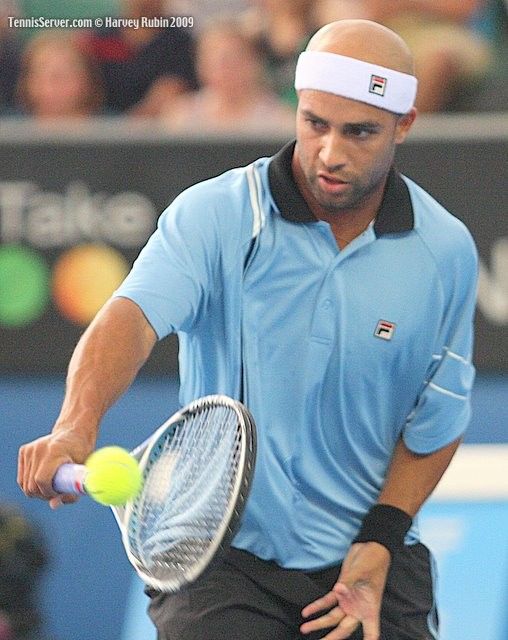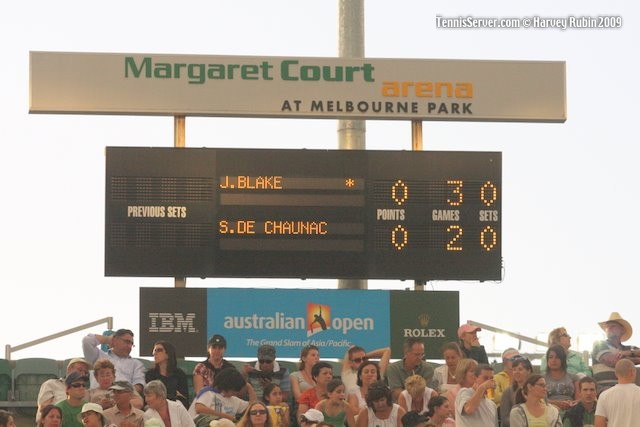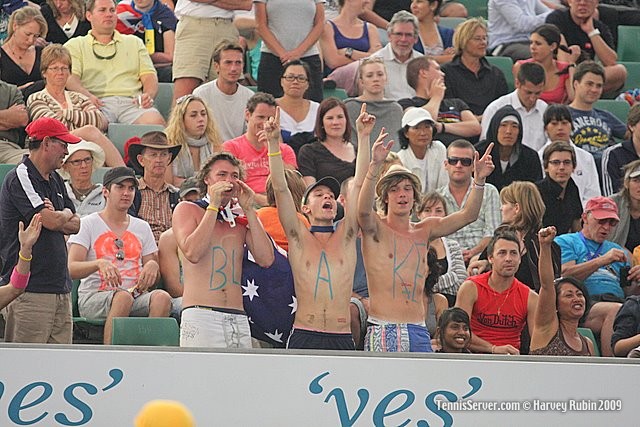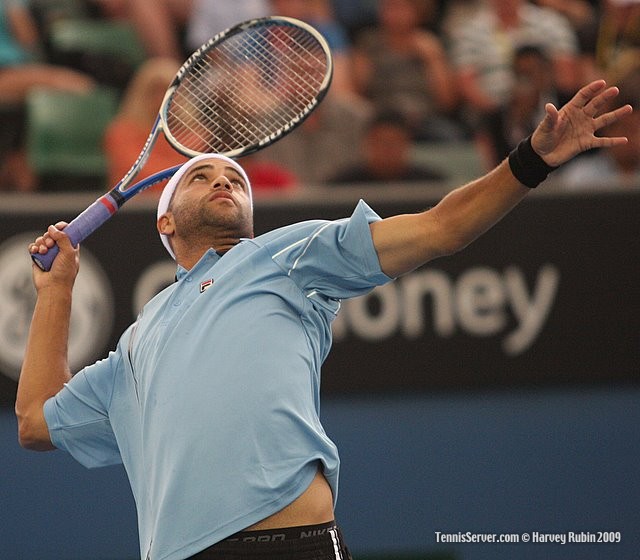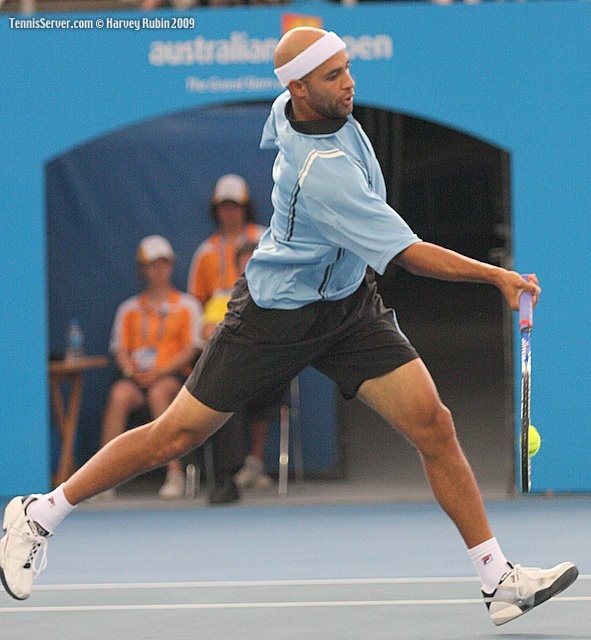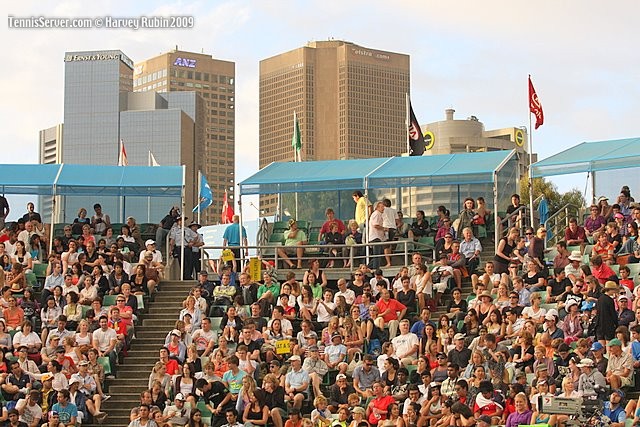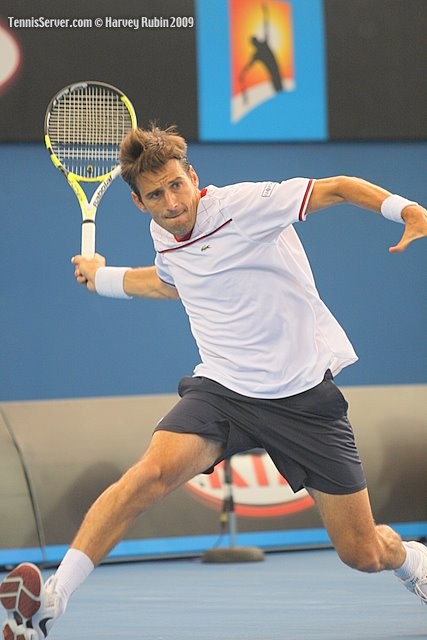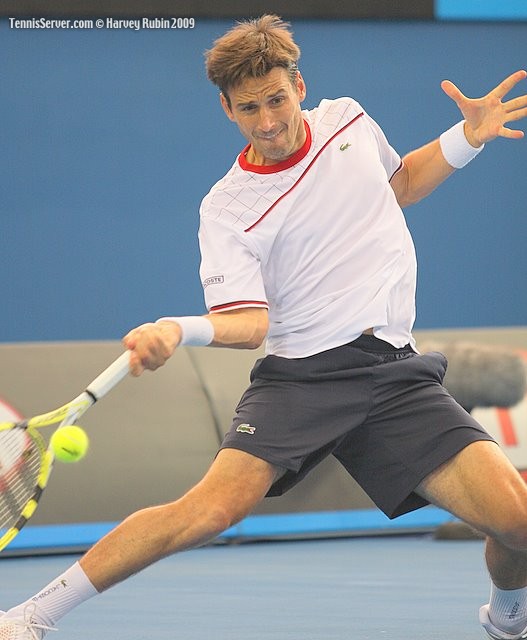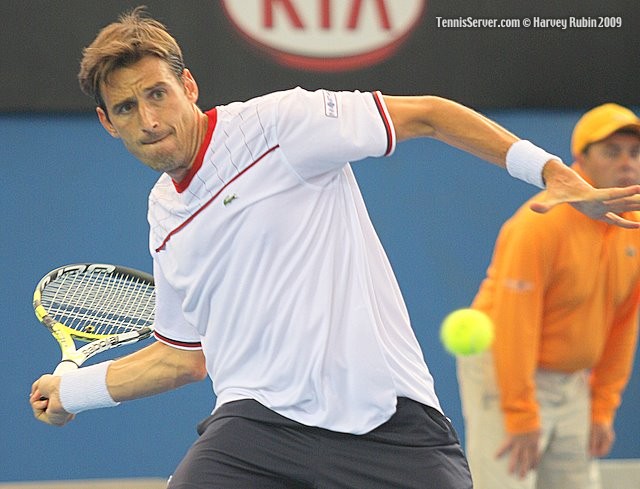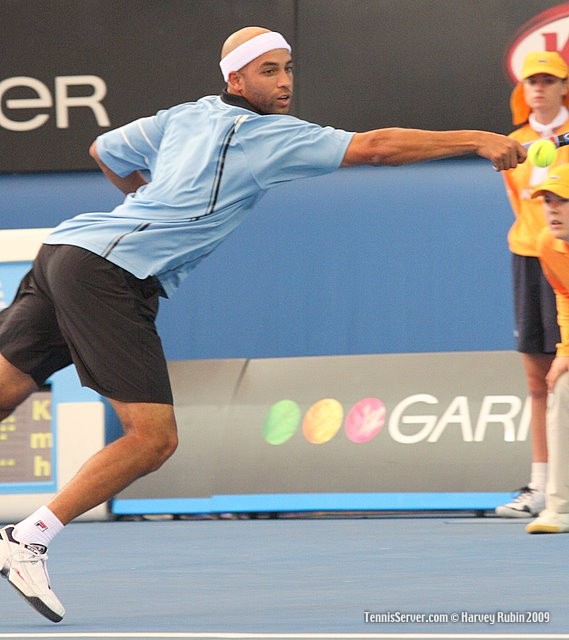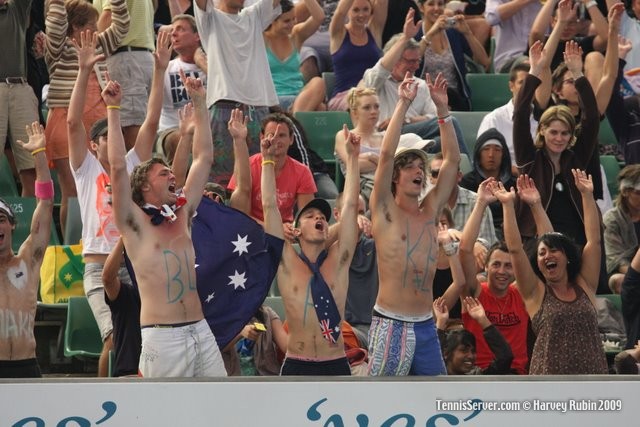One Williams Leaves Court
January 22, 2009 -- A smidge into the third set between Venus Williams and Carla Suarez Navarro a thought floated by: this petite Spanish woman could possibly be the next big name in women's tennis.
Here she was on center court at the Australian Open. Venus Williams stood across the net, all six-feet-two inches of her; and, from Navarro's five-foot-five perspective that was a whole lot of champion tennis player to battle. And, by the way, this was the same Venus with five Venus Rosewater Platters in her trophy case.
Navarro had every reason in the world to cramp, choke, or even faint right there in front of 17,000 fans. But she didn't.
She moved Venus left and right along the baseline, as if she were on a rope. Navarro angled the ball, drawing Venus in and forcing her to hit severe angles that opened the court for a final put-away blow. Those shots from Venus were a direct result of her court position. Additionally, she didn't have and couldn't get her feet to the ball fast enough -- a problem Venus rarely suffers from. And because she arrived late, she was off balance. She hit the ball too late, too wide, too long. She sucked air, her breathing stretched more than the length of her graceful arms and legs.
Venus played defensive tennis. That's not her game.
"I wasn't in control of points," she said in her post-match press conference. "I usually dictate points. My shots were too short. She played really well."
Not only did Navarro play well, she beat Williams in the third set after the #6 seed was up 4/1. She looked casual in her demolition of the American star, too. Venus has failed herself in prior matches. But here she was defeated. The set score: 7/5.
"I would've liked to have played better," Venus said. "Losing is never the best fun."
Venus also mentioned that Navarro "is obviously a great talent."
Neither of the sisters extends much praise to an opponent -- whether they beat them or not. Venus is more complimentary than Serena, though. However, for Venus to characterize Navarro as an obvious great talent reveals her honest appraisal and a prediction.
Brad Gilbert compared the Spaniard's backhand to Justine Henin's backhand -- a feared stroke. Navarro flung backhand shots, looped them, and drove them. She picked up the pace of the ball at optimal times and slowed it at optimal times. Her court sense was right on. She timed the ball, well, almost perfectly. She had to or else Venus would have come to the net and smothered her.
Tall players normally have an advantage when it comes to serving. Henin could pop off 100 mph serves all day. She worked at it. Navarro's deep knee bend and her reach for the ball aided her acceleration and placement of the ball. She didn't serve at a high percentage, but placed it well enough to keep Venus off balance and a second behind, leaving her a bit flatfooted. Navarro served into Venus's body in the third set several times, each one effectively.
Finally, Navarro is an innate athlete. Her strokes are effortless. She cracks the ball with ease at the best possible time. She anticipates as well as Martina Hingis did and she was one of the best at anticipation. Little players develop their senses to compensate.
Navarro really believed she could win that match, too. Right until the last point, which went three deuces, she believed she could topple Venus.
Carla Suarez Navarro came on the Grand Slam scene at the French Open last year. She made it to the quarterfinals where the soon-to-be crowned queen of clay Ana Ivanovic defeated her, ending her best performance at a major. The medium-pace and somewhat gritty surface of the courts in Melbourne suit Navarro's game to a tee, much as the red clay of Paris did. Her skills on grass and a faster hard court, like the ones in New York, might throw off the Spaniard. But she's only 20. There's plenty of time for improvement.





 You will join 13,000 other subscribers in receiving news of updates to the Tennis Server along with monthly tennis tips from tennis pro Tom Veneziano.
You will join 13,000 other subscribers in receiving news of updates to the Tennis Server along with monthly tennis tips from tennis pro Tom Veneziano. 

